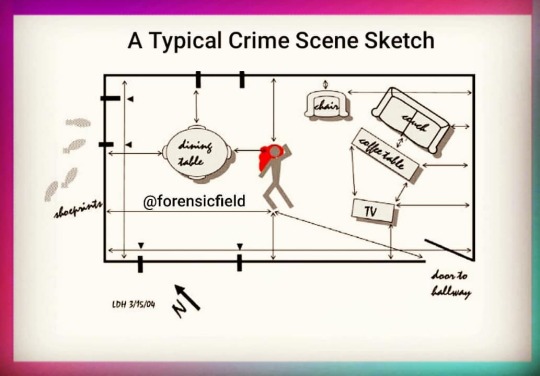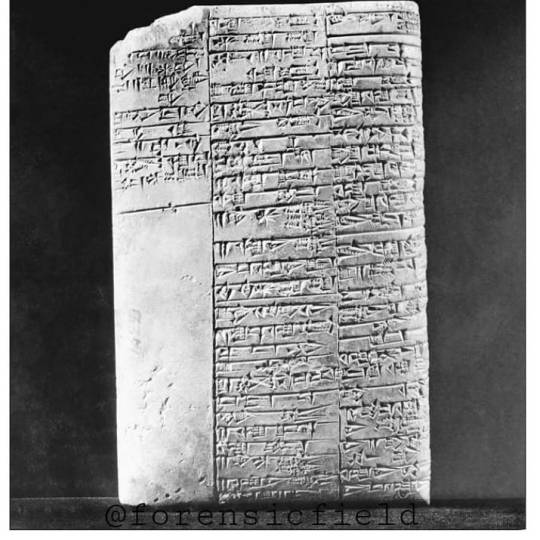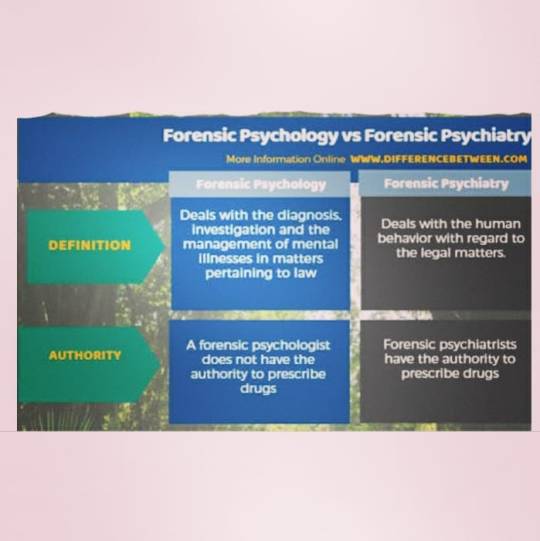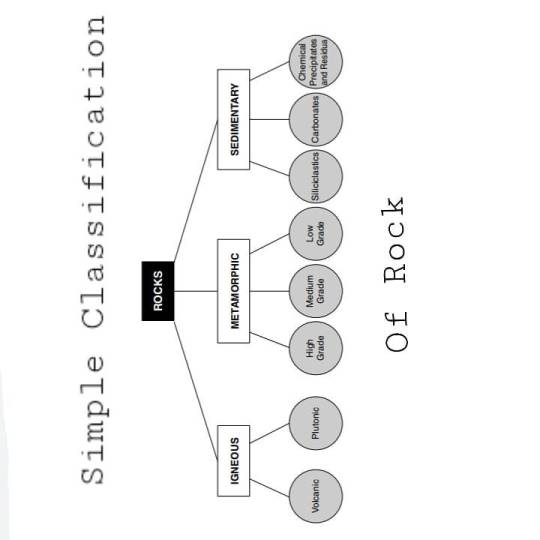#forensicintro
Explore tagged Tumblr posts
Text
Preparation of NET/JRF Forensic Science
We are going to Upload a series of Videos according to syllabus of NTA NET/JRF.
These Multiple Choice Questions will help in preparation of examination.
These videos will be prepared in following manner:
Syllabus has been divided into 10 Units and every unit has Pointed topics.
For example Unit - I consists
▪️Forensic Science,
▪️Physical Evidence,
▪️Crime Scene,
▪️Criminal Investigation,
▪️Courts,
▪️Organization of Forensic Science Laboratories of center and state, ▪️Fundamental rights,
▪️Criminal Profiling,
▪️Concept of quality control management in Forensic institutions.
So we will called it as a Topic 1, Topic 2 and so on.
In this Video we have covered Topic 1
Forensic Science: Definition, History & Development, Scope & Ethics in Forensic Science.
For More MCQs please Subscribe Our channel.
Like it✅, Share it↩ and Subscribe it✔.....
youtube
#forensicscience#forensics#forensic#forensicfield#criminology#forensicstudy#crimescene#forensicintro#forensicinvestigation#forensicbiology#netjrfforensic#netjrfquestionanswer#netjrfrelatedforensicquestion#netjrf#Youtube
22 notes
·
View notes
Text
Classification of Textile Fibre
Textile Fibers is the basic and principle raw materials to produce various types of textile finished products. A fiber that can be spun into yarn or processed into textile such as a woven fabric, knit fabric, lace, felt, non-woven etc by means of an appropriate interlacing method is called as Textile Fibers.
Generally Textile Fibers can be classified into main two types:
👉 Natural fiber And,
👉 Synthetic fiber/Manmade fiber/Artificial fiber.
Textile Fibers can also be classified in the following ways:
✍ Classification of textile fibers based on sources
✍ Classification of textile fibres based on polymer
Textile Fibers and Forensic Science
Textile fibers are a key form of trace evidence, and the ability to reliably associate or discriminate them is crucial for forensic scientists. While microscopic and instrumental analysis can be used to determine the composition of the fiber.
Additional specificity is gained by examining fiber color.

#forensic#forensics#criminology#forensicstudy#crimescene#forensicintro#forensicfield#forensic science#forensic science question and answer#forensic examination#crime scence investigation
10 notes
·
View notes
Text
Hello There,
I again want to share This video with those who want to ask if this field is good for them or not.
My team is getting approx 100 queries related to this only (We try to satisfy everyone with our answers but we heartly apologise if we couldn't).
I want to say that no field is good or bad, the choice, interest and time make it work.
Don't go for higher job opportunities, see if you can grab the only available job with your potential.
Is that field or subject suits your personality?
At This time when everyone is struggling with job crisis then no field is going to provide you one without dedication and knowledge and as you know forensic do not seek for knowledge only it also seek for reasoning, logic, sharpness.
So know yourself first so no one can reject you.
Don't forget to like and comment your opinion on this.. We want to make sure that everyone understand the good and bad..
Watch This video to know more...
https://youtu.be/8x-q9gi9k3E



#forensicscience#forensicinvestigation#forensics#forensic#forensicfield#forensicstudy#criminology#forensicintro#crimescene#forensic career#career in forensic field#forensic science as an career option
9 notes
·
View notes
Photo

The 12 characteristics of handwriting
1. LINE QUALITY
Do the lines flow or are they shaky and irregular? This can indicate the speed of the writing.
2. WORD AND LETTER SPACING
Are the letters and words equally spaced out, or are they bunched together? Or, is there seemingly no pattern to the spacing?
3. SIZE CONSISTENCY
Is the ratio of height to width consistent in each letter?
4. PEN LIFTS
Does the writer lift the pen from the paper or is the writing continuous? Excessive pen lifts can hint at simulation — someone deliberately altering their natural handwriting or copying that of another.
5. CONNECTING STROKES
Are uppercase and lowercase letters connected and continuous?
6. LETTERS COMPLETE
Are the letters fully formed, or are parts missing?
7. CURSIVE AND PRINTED LETTERS
Are the letters cursive, printed, or a combination of both?
8. PEN PRESSURE
Is the pen pressure equal for upward and downward strokes? When is the pressure applied?
9. SLANT
Do the letters slant to the left or the right, or does this vary?
10. BASELINE HABITS
Is the writing on the baseline of the paper, above the line, or below the line?
11. FLOURISHES AND EMBELLISHMENTS
Are there any fancy curls, loops or anything else unusual in the writing?
12. DIACRITIC PLACEMENT
Where are the crosses on t’s and dots on i’s? Are the t’s crossed? Is the cross on the t at the top, middle or bottom of the letter? Are the I’s dotted? If so, are they dotted to the left, the centre, or the right of the I?
Other things to be considered are spelling, phrasing and grammar. While investigating and comparing each of the above categories, the analysers also need to consider the following: Factors that can result in changes to a person’s handwriting:
Age
Mood
How much time they have to write
The writing instrument used
Drink and drugs
Illness
Trying to write differently
https://www.instagram.com/p/CDgF9VVl9P3/?igshid=cgz96oy3ljl6
#forensic#forensics#forensicscience#forensicfield#forensicintro#forensicinvestigation#questioneddocument#suspecteddocument#handwritingexamination#forensicdocumentexamination#criminology#crimescene#crimesceneinvestigation
14 notes
·
View notes
Photo

Question- What is Forensic Graphology? Answer- Forensic graphology is the study of handwriting. It is also known as graphoanalysis. Graphology is a process that is used by some to attempt to determine personality traits and details about a person based off of their handwriting. Forensic investigators use handwriting pattern/technology to determine personality traits of an individual.
#forensics#forensicscience#crimescene#forensic#criminology#forensicfield#forensicmcq#forensicquestionandanswer#forensicstudy#forensicinvestigation#evidence#forensicbiology#suspecteddocument#forensicknowledge#forensictoxicology#physicalevidence#questioneddocument#forensicexamination#forensicintro#forensiceducation#netjrf#forensicnetexamination#handwritinganalysis#handwriting#graphology#graphoanalysis
6 notes
·
View notes
Photo

Question- What is Crime Scene Sketch?
Answer- A crime scene sketch is a permanent record of the size and distance relationship of the crime scene and the physical evidence within it. The sketch serves to clarify the special information present within the photo-graphs and video documentation, because the other methods do not allow the viewer to easily gauge distances and dimensions. A sketch is the most simplistic manner in which to present crime scene layout and measurements. Photographer /camera positions may be noted within a sketch also.
Question- Why is a sketch important to crime scene documentation?
Answer- ■ It accurately portrays the physical facts.
■ It relates to the sequence of events at the scene.
■ It establishes the precise location and relationship of objects and evidence at the scene.
■ It helps to create a mental picture of the scene for those not present.
■ It is a permanent record of the scene.
■ It usually is admissible in court.
■ It assists in interviewing and interrogating.
■ It assists in preparing the written investigative report.
■ It assists in presenting the case in court. Well-prepared sketches and drawings help judges, juries, witnesses, and others to visualize the crime scene.
Question-When should sketches be made?
Answer- Sketch all serious crimes and accident scenes after photographs have been taken and before anything is moved.
Sketch the entire scene, the objects, and the evidence.
Question- How many types of sketches are made of crime scene?
Answer- Two types of sketches are made with regards to crime scene documentation: 1.) Rough sketches, and 2.) Final/finished sketches.
#forensics#forensicscience#crimescene#forensic#criminology#forensicfield#forensicmcq#forensicquestionandanswer#forensicstudy#forensicinvestigation#evidence#forensicbiology#suspecteddocument#forensicknowledge#forensictoxicology#physicalevidence#questioneddocument#forensicexamination#forensicintro#forensiceducation#netjrf#forensicnetexamination#crimescenesketch#crimesceneinvestigator#crimesceneinvestigation
8 notes
·
View notes
Photo

Facial Reconstruction Facial reconstruction is a method used in the forensic field when a crime involves unidentified remains. Facial reconstruction is usually performed by a sculptor who is an expert in facial anatomy.
Types of Reconstructions There are two main methods used in forensic facial approximation: 2-dimensional and 3-dimensional.
2D Reconstructions Two-dimensional facial reconstructions are hand-drawn portraits based on radiographs, antemortem photographs, and the skull. This method usually requires the collaboration of an artist and a forensic anthropologist. Recently developed, the F.A.C.E. and C.A.R.E.S. computer software programs quickly produce two-dimensional facial approximations that can be edited and manipulated with relative ease.
3D Reconstructions Three-dimensional facial reconstructions are either: 1) sculptures (made from casts of cranial remains) created with modeling clay and other materials or 2) high-resolution, three-dimensional computer images. Like two-dimensional reconstructions, three-dimensional reconstructions usually require both an artist and a forensic anthropologist. Computer programs create three-dimensional reconstructions by manipulating scanned photographs of the unidentified cranial remains, stock photographs of facial features, and other available reconstructions.
Superimposition Superimposition is a technique that is sometimes included among the methods of forensic facial reconstruction. It is only sometimes included as a technique because investigators must already have some kind of knowledge about the identity of the skeletal remains with which they are dealing. Forensic superimpositions are created by superimposing a photograph of an individual suspected of belonging to the unidentified skeletal remains with an X-ray of the unidentified skull. If the skull and the photograph are of the same individual, then the anatomical features of the face should align accurately.
#forensic#forensics#forensicscience#forensicfield#forensicintro#forensicinvestigation#superimposition#facialreconstruction#crimescene#crimescenceinvestigation#forensicanthropology#bone#deadtalk
8 notes
·
View notes
Photo

History of Drug, Poison and Chemistry
Chemistry and forensic chemistry developed largely from ancient knowledge and techniques associated with medicines. This 4,000-year-old Sumerian clay tablet in the Museum of the University of Pennsylvania has been translated by Dr. Samuel Noah Kramer of the museum and by Dr. Martin Levey of Pennsylvania State College. The tablet contains the oldest-known medical handbook. A portion reads: “White pear tree, the flower of the ‘moon’ plant, grind into a powder, dissolve in beer, let the man drink.” (Bettmann/CORBIS/ photo dated September 27, 1953)
#forensics#forensicscience#crimescene#forensic#criminology#forensicfield#forensicmcq#forensicquestionandanswer#forensicstudy#forensicinvestigation#evidence#forensicbiology#suspecteddocument#forensicknowledge#forensictoxicology#physicalevidence#questioneddocument#forensicexamination#forensicintro#forensiceducation#netjrf#forensicnetexamination#forensicchemistry#historyofforensic
6 notes
·
View notes
Photo

Fingerprint patterns: • Arch: Ridges flow one above the other in a gently arching configuration. There are no deltas or recurves. • Tented arch: Arch pattern with at least one up-thrusting ridge at right angles to the ridges above it. • Ulnar/radial loop: Consists of at least one free recurving ridge and one delta. These patterns are named after the ulna and radius, the bones of the forearm. In ulnar loop, recurves originate from and return to the little finger side of the hand, whereas recurves in radial loops originate from and return to the thumb side of the hand. • Whorl: Consists of at least one recurving ridge and two deltas. A straight line drawn between the points of delta will cross at least one of the ridges revolving around the core. • Central pocket loop: Similar to the whorl, except that none of the recurving ridges will be crossed by a straight line between the points of delta. • Double loop: Consists of two looping formations and two deltas. • Composite: Contains at least two of the previous described basic patterns, excluding the arch. • Accidental: Contains two deltas, one in front of an up-thrusting formation and the other in front of a recurving formation.
#forensic#forensics#forensicscience#forensicfield#forensicintro#forensicinvestigation#forensicscientist#forensiclab#fingerprints#fingerprinting#fingerprintdetection#fingerprintrrcognition#fingerprinttypes#arch#loop#whorl#criminology#crimescene#crimesceneinvestigation#criminalistic#forensicknowledge#forensicnotes#forensiclearning#forensicstudy#forensictalk
6 notes
·
View notes
Photo

Best Forensic Lines from Best Novels.
The Dark Before Dawn by Laurie Stevens is my favorite. Which crime novel is your favourite? Tell us in comment section 💬
#forensics#forensicscience#crimescene#forensic#criminology#forensicfield#forensicmcq#forensicquestionandanswer#forensicstudy#forensicinvestigation#evidence#forensicbiology#suspecteddocument#forensicknowledge#forensictoxicology#physicalevidence#questioneddocument#forensicexamination#forensicintro#forensiceducation#netjrf#forensicnetexamination#crimenovel#crimefiction#novel#detective#forensicquotes#forensiclines#forensicsayings
4 notes
·
View notes
Photo

Beginning of Forensic Psychiatry
The beginnings of this specialty of the forensic sciences is the M’Naughten case in England, in which an insane person shot a government official and was found guilty by virtue of insanity. One of the leaders in this field of psychiatry was Dr. I. Ray, who contributed a treatise on the medical jurisprudence on insanity. Quen had written about earlier historical aspects of forensic psychiatry in America as well. The English Court cases are summarized in this field. The development of criminal profiling is another approach in support of police investigation of cases based on a study of the behavior of the serial murderer so that a suspect can be evaluated before and after he has been placed into custody.
#forensics#forensicscience#crimescene#forensic#criminology#forensicfield#forensicmcq#forensicquestionandanswer#forensicstudy#forensicinvestigation#evidence#forensicbiology#suspecteddocument#forensicknowledge#forensictoxicology#physicalevidence#questioneddocument#forensicexamination#forensicintro#forensiceducation#netjrf#forensicnetexamination#forensicpsychiatry#forensicpsychology#psychology#insanity#mcnaughtenrule#historyofforensicscience#historyofforrensicpsychiatry
5 notes
·
View notes
Photo

Trace Evidence
Trace evidence often refers to minute samples of a substance such as hair, fibers, glass, paint chips and fragments. Crime scenes commonly contain trace evidence, often caused by the perpetrator unknowingly coming into contact with surfaces and leaving behind or picking up particulates. Careful collection of evidences from crime scene can give lots of information about where a sample came from and how it helps to tell the story. Scientists examine the physical, optical and chemical properties of trace evidence and use a variety of tools to find and compare samples, and look for the sources or each item. Most test methods require magnification and chemical analysis.
Like it✅, Share it↩ and Subscribe it✔…..
Watch this video For more info:
https://youtu.be/8pYtQtowDpA
#forensics#forensicscience#crimescene#forensic#criminology#forensicfield#forensicmcq#forensicquestionandanswer#forensicstudy#forensicinvestigation#evidence#forensicbiology#suspecteddocument#forensicknowledge#forensictoxicology#physicalevidence#questioneddocument#forensicexamination#forensicintro#forensiceducation#netjrf#forensicnetexamination
4 notes
·
View notes
Photo

Skull Fractures A skull fracture is any break in the cranial bone, also known as the skull. There are many types of skull fractures, but only one major cause: an impact or a blow to the head that’s strong enough to break the bone. An injury to the brain can also accompany the fracture.
Causes of skull fractures:
A skull fracture occurs when a force that’s strong enough to break the bone hits the skull. Any type of impact to the head can cause a skull fracture. This includes being hit with an object, falling and hitting the ground, injuring the head in a car accident, or any other type of trauma.
Classification of Skull fractures:: (Saukko and Knight 2004);
Linear – straight or curved fracture lines, which may radiate from a depressed region, or occur at a distance from the impact site, and tend to occur at ‘unsupported’ regions of the skull (e.g. across the supra-orbital ridges). Linear fractures in children or young adults may pass through the suture lines (‘diastatic fracture’). ‘Hinge’ fractures occur when the linear fracture passes across the middle cranial fossa, separating the skull base into 2 halves, and may be caused by a heavy blow to the side of the head (e.g. in motorcycle accidents).
Ring – these occur in the posterior fossa around the foramen magnum, particularly following a fall from a height (with primary ‘feet first’ impact), where the kinetic energy transfer is transmitted up the cervical spine.
Pond – this is a shallow depressed fracture, more common in infants.
Mosaic (‘spider’s web’) – a comminuted depressed fracture with radiating fissures.
Depressed – a fracture caused by force applied in a ‘focussed’ area e.g. by a hammer. The outer and inner tables of the skull are driven inwards, often causing damage to the brain or its coverings. The shape of the fracture may indicate the type of weapon used.
#forensic#forensics#forensicfield#forensicscience#fracture#skullfracture#typesofskullfracture#criminology#criminalistic#forensicintro#forensicinvestigation#forensicnews#forensicstudy#crimescene#crimesceneinvestigation#investigation#police#casestudy#forensiclatest
6 notes
·
View notes
Photo

Forensic Science History
#forensics#forensicscience#crimescene#forensic#criminology#forensicfield#forensicmcq#forensicquestionandanswer#forensicstudy#forensicinvestigation#evidence#forensicbiology#suspecteddocument#forensicknowledge#forensictoxicology#physicalevidence#questioneddocument#forensicexamination#forensicintro#forensiceducation#netjrf#forensicnetexamination#historyofforensicscience#forensicsciencehistory
4 notes
·
View notes
Photo

Rock and Forensic Science
👉 A rock may be defined simply as a mass of solid matter that is composed mainly of mineral crystals or grains that are texturally intergrown or held together by some form of cement.
👉 Pieces of rock have several attributes which can potentially be used as a basis for forensic comparison, including size, shape, surface texture (including weathering rinds and coatings), density, color, chemical composition, mineralogical composition, internal textural layering, fabric, magnetic characteristics, fossil assemblage (both macrofossil and microfossil), and age.
👉 Three main rock groups are: 🌑 Igneous, 🌑 Metamorphic, 🌑 and Sedimentary.
Each of which can be sub-divided, are traditionally distinguished.
#forensics#forensicscience#crimescene#forensic#criminology#forensicfield#forensicmcq#forensicquestionandanswer#forensicstudy#forensicinvestigation#evidence#forensicbiology#suspecteddocument#forensicknowledge#forensictoxicology#physicalevidence#questioneddocument#forensicexamination#forensicintro#forensiceducation#netjrf#forensicnetexamination#rock#cementadulterant#rockandforensic
3 notes
·
View notes
Photo

Classes and Types of Evidence
#forensics#forensicscience#crimescene#forensic#criminology#forensicfield#forensicmcq#forensicquestionandanswer#forensicstudy#forensicinvestigation#evidence#forensicbiology#suspecteddocument#forensicknowledge#forensictoxicology#physicalevidence#questioneddocument#forensicexamination#forensicintro#forensiceducation#netjrf#forensicnetexamination#biologicalevidence#chemicalevidence#traceevidence#evidencetype
4 notes
·
View notes